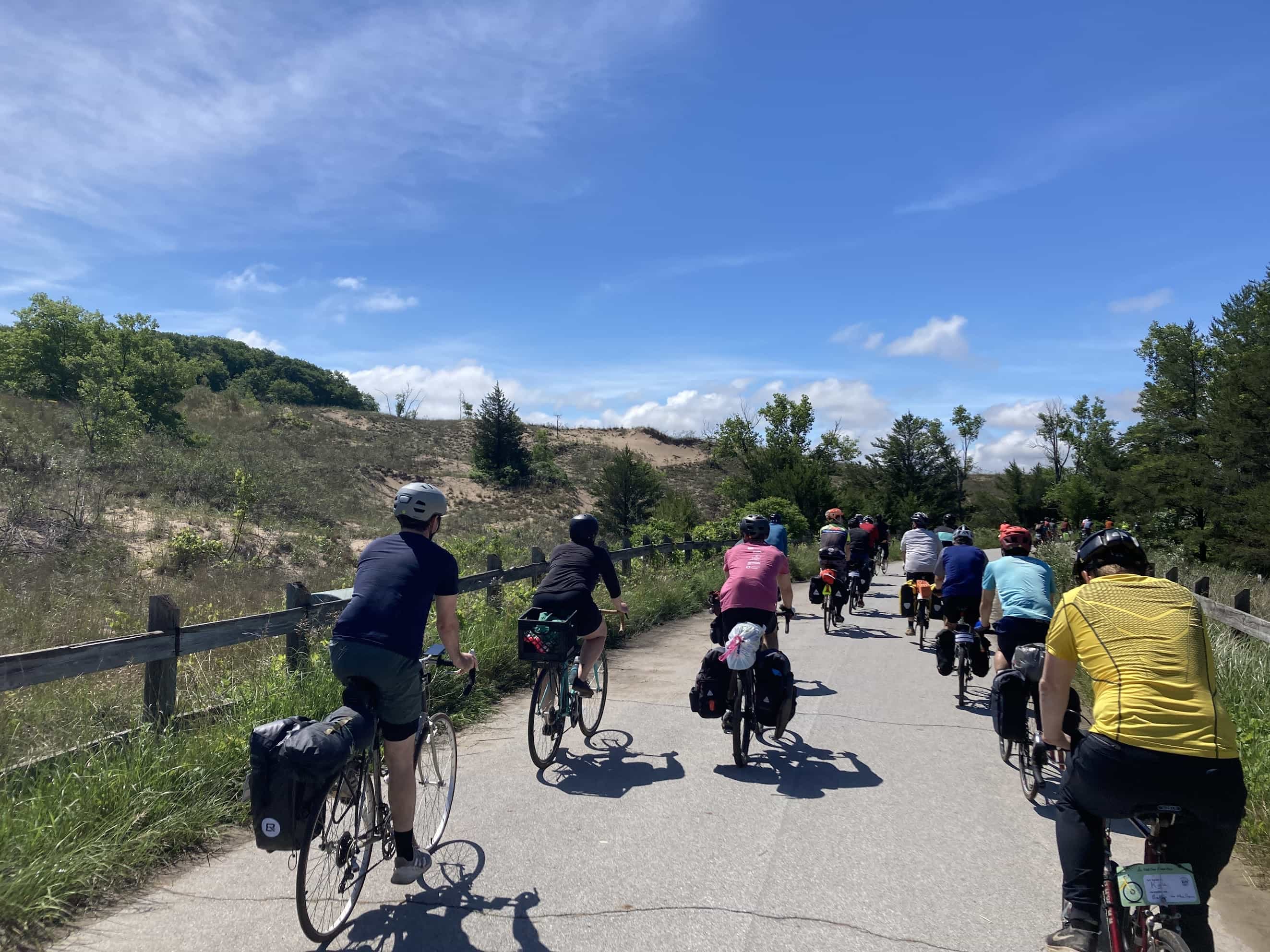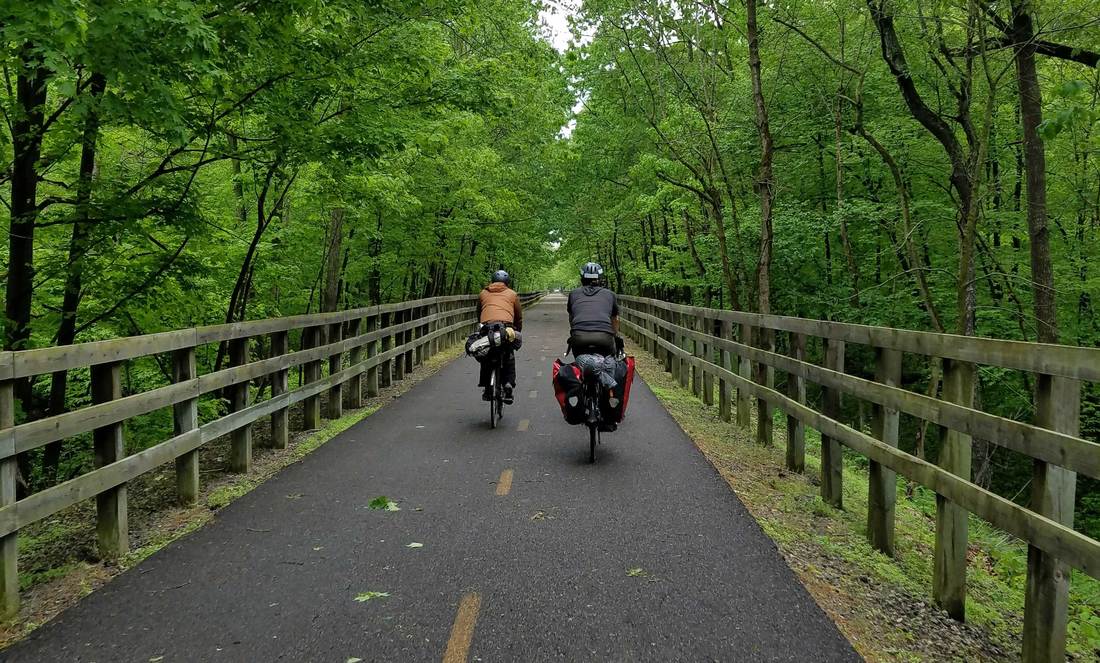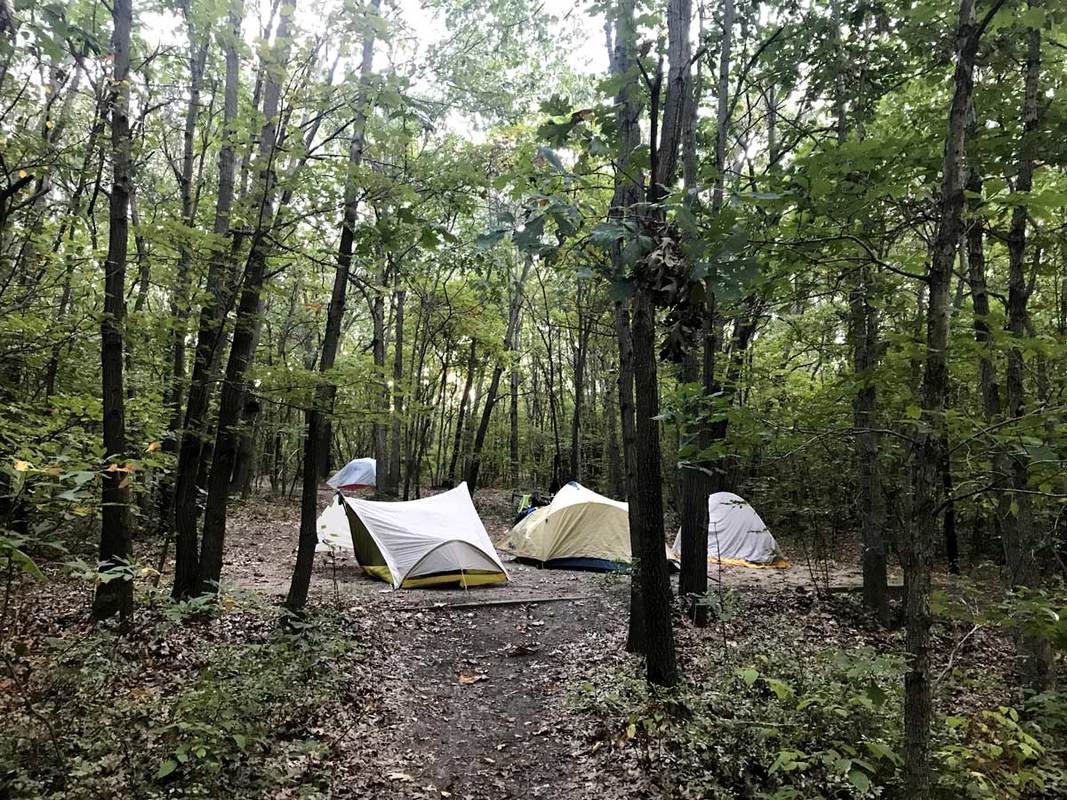To the Dunes

Chicago to Indiana Dunes National Park
From steel mills to sand hills, this route tells the story of a region where nature and industry collide—and where adventure still thrives.
Trip highlights
- Towering sand dunes nearly 200 feet tall
- Route passes steel mills, marshes, parks and shoreline
- Explore the region’s industrial and ecological history
- Stop at one of the last wood-smoked seafood shacks in Illinois
- Ride through Jackson Park and past the 1893 World’s Fair site
- Camp along the beaches of Lake Michigan

What you'll discover
Starting from Buckingham fountain there are two main routes you can choose from. The safest route is mostly on bicycle paths, it adds 10 more miles to the ride but it offers a more safe, off the road route. The advanced route is more direct but it does contain sections that are on the road (U.S. Route 12). Therefore cyclists taking the advanced route should already have knowledge of, and be comfortable with, on the road riding. Sections are truly daring, and the road narrows to no shoulder at all within 3 miles of the state park. Cyclists not familiar with the area are recommended to take the more relaxed bike trail path.
Things to do and see
Nature Center/Interpretive Naturalist Services: Brochures detailing all the great attractions, restaurants, lodging and more in Indiana Dunes Country.
Wolfe Lake: An 804-acre lake that straddles the Indiana and Illinois state line near Lake Michigan with three bike trails to choose from. One trail takes through the middle.
Chicago | Lakefront Path | Burnham Park: This section of the trail follows along Lake Michigan. Filled with an array of museums, beaches, and array of cultural activities.
Three Dune Challenge: Challenge yourself, your friends and your family to climb the three tallest sand dunes at Indiana Dunes State Park. The 1.5-mile challenge trail is the toughest in the park, with 552 vertical feet to climb. The reward: breathtaking views and the title of dune conqueror.
18th Street Brewery Tap Room: Beers range from saisons to double india pale ales to double milk stouts to pilsners and lagers.
Cowles Bog: An 8,000-year-old fen in the Indiana Dunes National Lakeshore, near Chesterton, Indiana. It is named for Dr. Henry Chandler Cowles who did his pioneering work in ecology and ecological succession here. His work brought international attention to the area which led to efforts to preserve the Indiana Dunes
Century of Progress Architectural District: The district comprises five buildings, all from the Homes of Tomorrow Exhibition during the 1933 Century of Progress World's Fair which took place in Chicago. Intended to display the future of housing, reflect a variety of designs, experimental materials and new technologies.
Camping and lodging
Camping can be had at the State Park or at the National Lakeshore campground, both provide a variety of camping options. You can also stay in a nearby hotel for a more comfortable stay.
Camping Reservation Resources:
- Indiana Dunes State Park (reservations accepted)
- Indiana Dunes National Park (Only walk ups. Can not reserve spots.)
Local Hotel Resources:
- Econo Lodge: Riding your bike from here to the State park is easy with a nice 5 foot road shoulder to ride on. Special added bonus- the State Park visitor center is on the way and close to here.
- Spring House Inn: Staying here allows you to bike on a trail right from your hotel to the State Park and national lakeshore.
View Map of the Campground

Nearby Train Stations
Getting There:
You can do it all by bike or do one day by train. The Train is about a one hour ride from the park to Chicago.
**Only select trains, times, and stations will allow bikes on the South Shore Train Line.
View Train Map, Stations & Schedule

Nearby train stations
Upon your visit
Take care to ensure whatever you bring in is taken out. Be sure to stay on the established trails to not disturb this fragile ecosystem and cause a blowout. Be a part of legacy created by conservationists and protect this crown jewel. Take care and preserve this public treasure for future generations as if you are the owner.
Why? Because you are.

